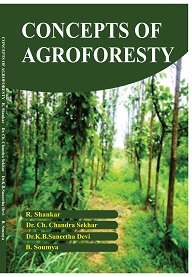
R. Shankar
R. Shankar completed his graduate and post graduation in Department
of Agronomy form college of Agriculture Rajendranagar Acharya N G
Ranga agriculture university. He did hid research work on Agroforestry
systems and He has to his credit 11 international papers. He participated
in national and international seminars and workshops.
Read more...


